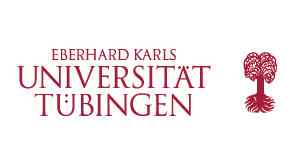Tübingen University launches its new TEE course with HeartWorks
The Anesthesiology and Intensive Care Department (Head of Department: Prof. Dr. Peter Rosenberger) at the leading Tübingen University of Medicine, Germany has recently launched its new TEE simulation course using the HeartWorks system. Dr. Harry Magunia, Staff Anesthesiologist at the University said, ‘While medical simulation has been gathering momentum in Germany for some years now, simulation training for TEE has been limited. But I believe that now, we have the opportunity to make significant improvements to the way we teach this important skill. We can achieve higher levels of competence in a shorter space of time and by providing practical experience on a manikin rather than a real patient, the benefits to patient safety are obvious.’
How do you train more students in smaller class sizes and increase levels of competence?
Students of perioperative TEE in Germany are required to have forty hours of training. One of the challenges has been that due to limited theatre time and the random availability of patients with pathological conditions, group sizes have by necessity been large. It is not untypical to have as many as 30 people in a group. As a result, it has not been possible to give students enough hands-on practice during their training period. Dr. Magunia was keen to address this compromise and explore how simulation could support the key learning objectives of TEE, namely accurate image acquisition through the refinement of probe handling and correct interpretation of those images to determine diagnosis and appropriate treatment.
Getting hands-on!
The TEE course in Tuebingen (www.TEE-Tuebingen.de) is a 5 day course that has been designed to be specifically relevant to Cardiothoracic Anaesthetists and Intensivists. ‘We allow up to 12 participants maximum as the emphasis of this course is on the practical’, said Dr. Magunia. ‘Using the HeartWorks simulator, participants can practice extensively with the probe to obtain the standard views before moving on to learn recognition of pathological conditions and apply the more advanced use of Doppler and m-mode to make quantitative assessment of cardiac function. We include opportunities to transfer these skills under supervision in both theatre and ICU within the 5 days so that students can confidently make the transition from the training environment to real patient care.’
Making a difference
Commenting on the impact of the new course, he continued, ‘We are confident that doctors will be able to apply a more comprehensive knowledge and higher levels of TEE competence much earlier in their careers than was previously the case under the old methods of teaching. It is my view that using manikin based simulation for TEE training is going to be the way forward. I believe in 10 years’, doctors will not be allowed to perform TEE on a patient without having first trained on a simulator.’
Looking ahead to further optimise the outcomes of other training programmes using the HeartWorks simulator, Dr. Magunia said, ‘We will shortly be working with our Simulation Team here at Tubingen to incorporate echo into our Advanced Life Support course’.

We are confident that doctors will be able to apply a more comprehensive knowledge and higher levels of TEE competence much earlier in their careers than was previously the case.
Dr. Harry Magunia, Tubingen University, Germany